I was sitting at a picnic table under a large tree in front of the Cyclemos Motorcycle Museum savoring one of Vinnie T’s burgers with all the trimmings, and a fellow on the other side of the table said, “You’re not from around here.”
“Nope,” I agreed, as I looked over the map of Tennessee in front me.
“You looking for good roads?”
“Sure am.”
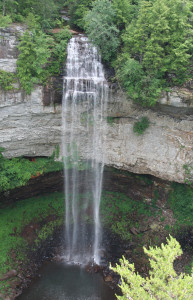
With a ketchuppy finger he reached across and ran a line along my map. “Go east on 52 about 50 miles, then after Alpine head south on 85 and you’ll hit Ten-Level Hill. That’s hairpins all the way up. Great ride!”
And it was, it truly was, with ten 180-degree turns on a steep hillside, where first gear, major lean and a slight turn of the handlebars was required. Back off the throttle in a corner like that and the bike is going to fall over.
I suppose most of you readers have never heard of the Cyclemos Museum, or of Vinnie T’s. That’s all Tennessee stuff, here in the highlands of the Cumberland Plateau. The museum is in the village of Red Boiling Springs, its name coming from the reddish-colored hot springs that created a successful health destination from the 1880s to World War II. Now it is a quaint old place relying on tourists to keep the three historic hotels occupied. The museum’s owner, Mike, got bored with being a landscape architect, loved motorcycles, bought a barn and began stuffing it with old motorcycles and motorcycling paraphernalia; it is a good visit. And Vinnie T’s is a well-known restaurant in the small city of Cookeville, about 50 miles to the southeast. The museum and VT’s teamed up to feed a couple of hundred motorcyclists, all part of the 2012 state Harley Owners Group rally.
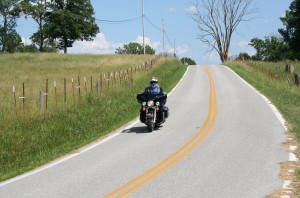
In the past I’ve spent quite a bit of time in Tennessee, from the Great Smoky Mountains National Park way in the east, around Nashville and the Natchez Trace in the middle, and on west to Memphis and Elvisland. But I’ve never taken a long look at the Cumberland Highlands, on the great plateau east of Nashville. Until the state tourism board offered me a trip, ostensibly to cover the Harley gathering in Cookeville, but in truth an attempt to seduce me into writing nice things about the motorcycling opportunities offered in the Cumberland region. Fly me in, give me a Harley Ultra and a place to stay, fly me home when it’s done…who could resist? Not this weakling.
Cookeville is a fine venue for a rally, not too big, not too small. It’s a county seat along Interstate 40 with a fairground, has 1,700 beds, as the motel/hotel trade refers to lodging, and with 30,000 Cookevillians it does not have an overly urban atmosphere. Most motorcyclists prefer riding in the country rather than cruising through a city, and this had to be the ridingest HOG rally I have ever been to, averaging about 200 miles a day. And the roads were superb.
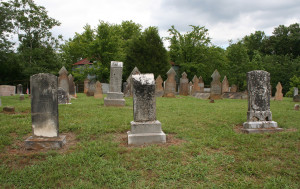
Every day would start with a ride, a couple of hundred motorcycles gathering in a big parking area behind rally headquarters before 9 o’clock. Along with half a dozen of the local motor cops. The city was extremely cooperative on all levels, and helped immensely in making the rally a success. Getting out of town meant going through three or four traffic lights, and with a whole lot of riders, that can be problematic. So the police happily cleared the way, and as soon as our procession was out of town, they returned to their urban duties and we sped up.
One morning, the ride (over 400 bikes) headed north to Standing Stone State Park and state forest, covering some 11,000 acres of mostly hardwood trees. On big rides I prefer to be either at the front or the back, so I ran sweep with an old friend from Tennessee, Richard. The state park is one of those WPA/make-work creations out of the Great Depression, with a dam, a lake, cabins and camping, and beautiful vistas. Below the dam, another Cookeville outfit called Whitt’s Barbeque had set up to feed everyone a big breakfast, a logistical feat. Richard recommended that he and I leave early and head for a little known spot he knew, Ozone Falls, the sort of place I probably would never see if someone in the know didn’t take me there.
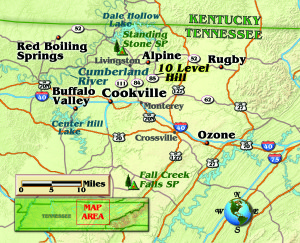
After a good hour on the back roads we got to Ozone village’s unincorporated limits. We parked, walked a couple of hundred yards through the woods, and came to the top of the falls, an impressive sight as the Ozone Creek water dropped a hundred feet down to a pool far below. There are more than 150 waterfalls in the Cumberlands, each with their own small-scale beauty. Richard urged me to lie down on the flat sandstone next to the falls and look over and under the edge—which was hollowed out to some 50 feet behind me. I was glad to have seen the place.
Having different afternoon itineraries, we split up, me heading west to Buffalo Valley and the Central Tennessee Dragway. That is an out-of-the-way strip for sure, tucked into a little “holler” (Tennessean for valley) off winding Rock Springs Road. Anybody who had a HOG wristband was free to burn up a clutch on this 1/8th-mile strip of sun-scorched asphalt—it was about 85 degrees, and no shade. That did not deter several hundred riders, from Sportsters to V-Rods, from having a go at lighting up the lights. I thought of having a run, but the fellow who provided me with the bike was running the show, and he might not have appreciated such antics.
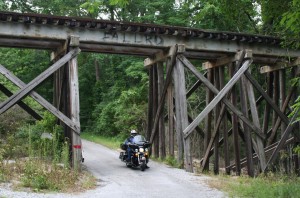
After the drags, the Cookeville Harley dealer had a band and food, which morphed into a bike (and car) show over by the historic railroad station, with another band. The motorcycles and people were rather dwarfed by the station’s 1913 Baldwin 10-wheeler locomotive. A nice aspect of this rally was that the townsfolk of Cookeville were definitely included in many of these festivities, and lots of them showed and had a very good time. That old “bad biker” myth was nowhere to be found. Later, a casino was set up at rally HQ, and though Tennessee law frowns on gambling with money, chips were enough to keep the action going at the tables.
The third morning I headed south to Fall Creek Falls State Park. Good ride, great waterfall, with a drop of more than 250 feet. The park covers about 25,000 acres; Tennessee has over 50 state parks, a dozen of them are in the Cumberland area and every one is probably a great destination. The Cumberland Plateau is one of those geologic variations, a sandstone-based upland running from Kentucky down to Alabama, heavily wooded and deeply dissected by hundreds of miles of streams and rivers, the Cumberland River being the biggest.
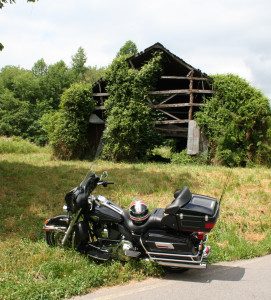
After a long look at the falls I split from the group and decided I could find my own way back. Which I did, after almost endless joyful miles of empty roads twisting through the woods, going over hill, through the dales. It seemed like any road was a good ride, and an occasional glance at my map kept me away from the towns.
That evening the rally took over the fairgrounds, offering vendors, a motorcycle stunt show and music, with two bands playing from 7 o’clock to almost 10. On my way back to my motel, I explored the town a little and went down Willow Avenue, passing by a very large, very pink elephant. I promise, I was stone, cold sober, not even a beer, but I vowed to make it a point to go by the next day and ask about it.
Saturday was the last day of the rally, and Bubba, one of the local dealers, was putting on the Adrenaline Ride. “What’s the route?” I asked.
“Over Ten-Level Hill,” he said.
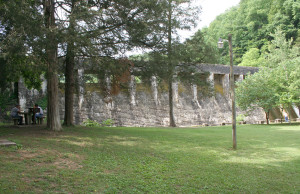
“You’re going to take a group over that!? I’d call this the Apocalyptic Ride.”
“Naw, these guys are good, and there’ll only be a couple of dozen.” More like 10 dozen showed up, and even though Bubba gave a good description of what was awaiting them, they all decided to come along.
Again, I rode near the front, and on the far side of the hill we stopped to let everyone catch up. I thought there would be a couple who wouldn’t make it, but I was wrong; only one rider fell over, and his bike was soon righted by those behind and he continued on the trip with a few abrasions and a bruised ego. I was impressed at the quality of Tennessee riding ability.
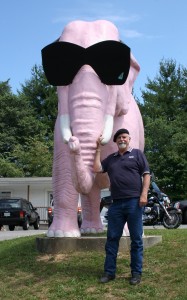
After the stop, I took off on my own to head to a little burg called Rugby, focusing on a curious bit of Tennessee history. Back in 1880, a wealthy Englishman bought a lot of land and convinced a number of well-heeled Brits to emigrate to the U.S. and be part of a utopian farming community…using hired labor, of course. More than 300 men and women came, built some very nice Victorian buildings, but found that the soil was not good for crops, since the plateau’s sandstone was just below the surface. By 1900 the dream was over, but a number of buildings remain to this day, several of them B&B’s. I recommend a visit.
Back to the fairgrounds for the final festivities, which included a very long parade. Over 2,600 riders had attended the rally, and most were on hand with a lot of locals to see the Charlie Daniels band.
Sunday morning I had to turn the Ultra in at Bubba’s and catch a ride to the airport. I hope to return in 2014, because Tennessee HOG has decided to hold the state rally there again—that’s how good a time everybody had.
Oh, the pink elephant? I heard the story behind it, but I’m not telling.
(This article Scouting the Cumberland Highlands: Great riding and a pink elephant in Tennessee was published in the November 2012 issue of Rider magazine.)

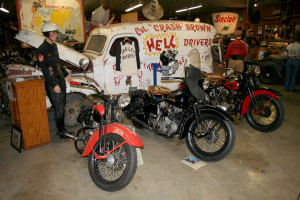
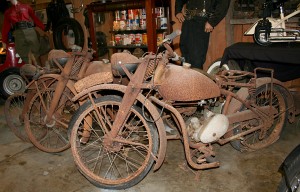
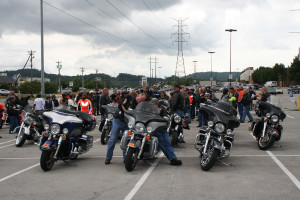







What happened to the highlighted route? It was printed as shown in 2012.